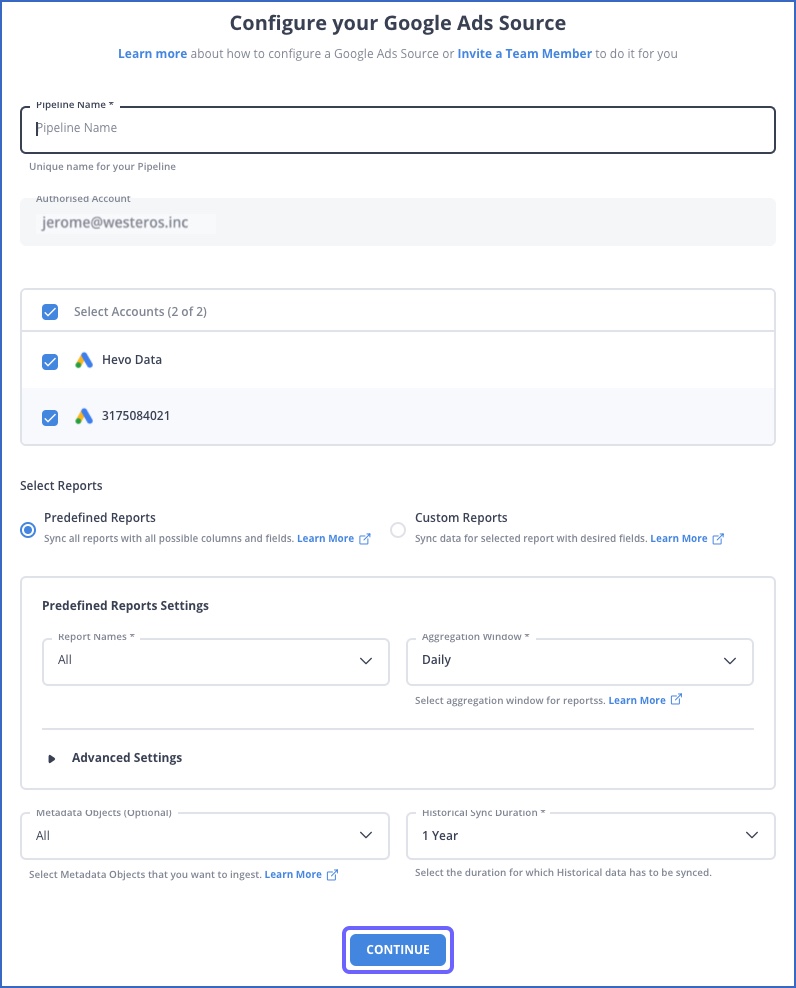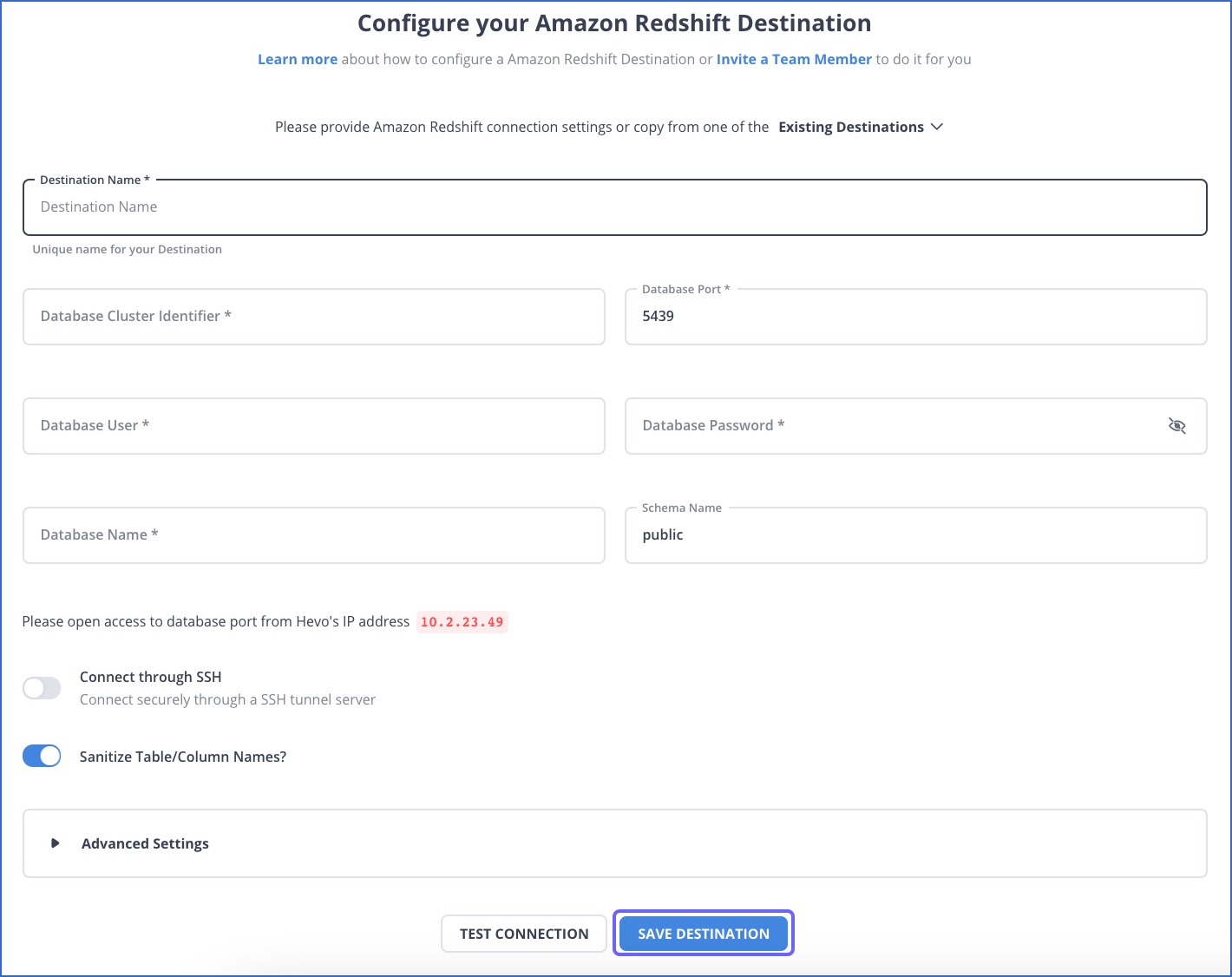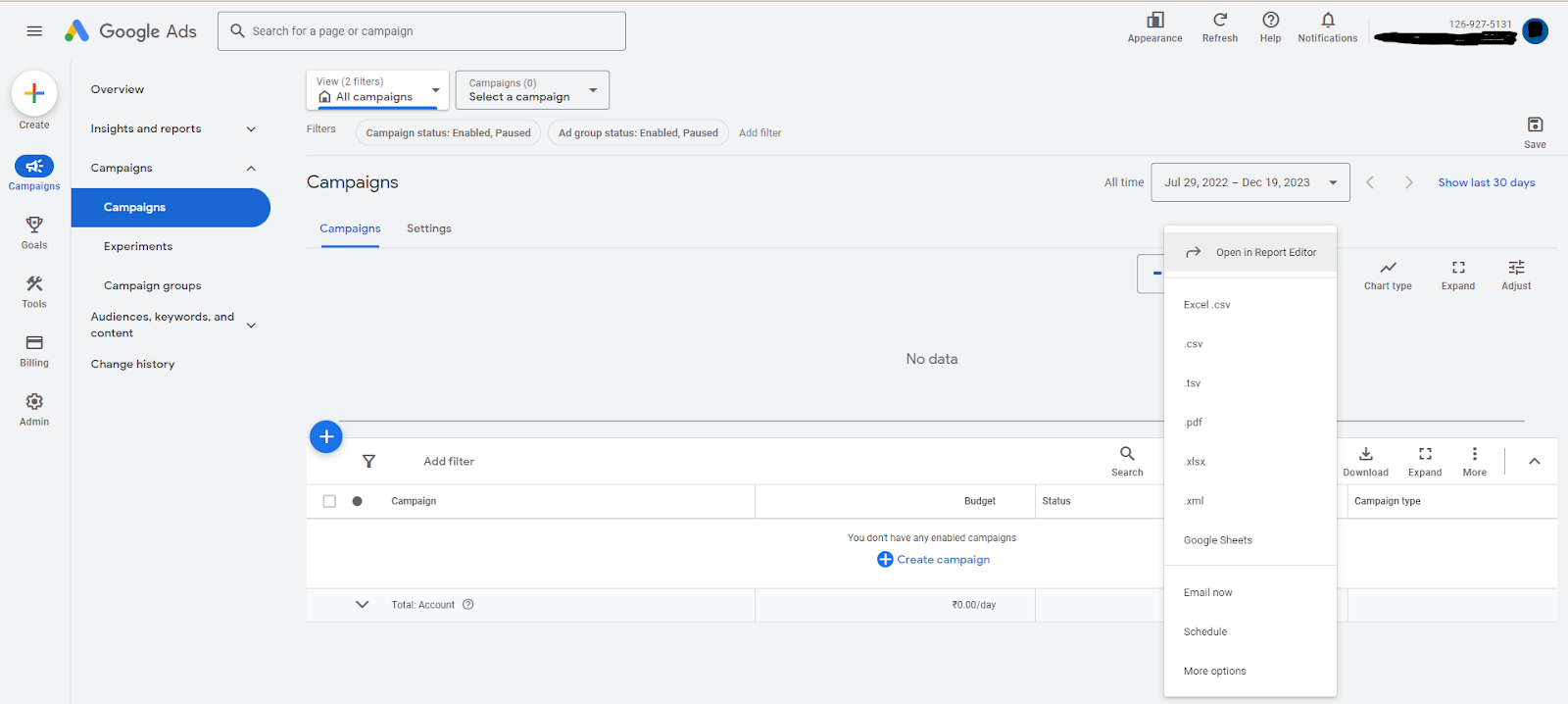Your business uses Google Ads heavily to acquire more customers and build your brand. Given the importance of this data, moving data from Google Ads to a robust Data Warehouse Redshift for advanced analytics is a step in the right direction. Google Ads is an advertising platform from Google that provides you with the tools for launching ad campaigns, product listings, or videos for your users. On the other hand, Amazon Redshift is a Cloud-based Data Warehousing solution from Amazon Web Services (AWS).
This blog will introduce you to Google Ads and Amazon Redshift. It will also discuss two approaches so that you can weigh your options and choose wisely while loading data from Google Ads to Redshift. The 1st method is manual and demands technical proficiency, while the 2nd method uses Hevo Data.
Table of Contents
Introduction to Google Ads
Google Ads is an Online Advertising Platform that allows businesses to showcase highly personalized ads in various formats such as Text Ads, Video Ads, Image Ads. Advertising copy is placed on pages where Google Ads things are relevant. Businesses can choose to pay Google basis a flexible model (Pay Per Click or Pay for the advertisement shown).
Given Google’s reach, this has become one of the most favorite advertising channels for modern Marketers.
Unlock advanced analytics, faster reporting, and powerful querying to make data-driven advertising decisions with ease. Transform your ad data into impactful insights with Hevo. Here’s how we simplify the process:
- Seamlessly pull data from Google Ads and over 150+ other sources with ease.
- Utilize drag-and-drop and custom Python script features to transform your data.
- Efficiently migrate data to a data warehouse, ensuring it’s ready for insightful analysis.
Try Hevo and discover how companies like EdApp have chosen Hevo over tools like Stitch to “build faster and more granular in-app reporting for their customers.”
Get Started with Hevo for FreeIntroduction to Amazon Redshift
AWS Redshift is a Data Warehouse managed by Amazon Web Services (AWS). It is built using MPP (massively parallel processing) architecture and has the capacity to store large sets of data and perform advanced analytics. Designed to run complex analytical workloads in a cost-efficient fashion, Amazon Redshift has emerged to be a popular Cloud Data Warehouse choice for modern data teams.
Methods to Load Data from Google Ads to Redshift
Majorly there are two methods through which you can load your data from Google Ads to Redshift:
- Method 1: Load Data from Google Ads to Redshift using Hevo Data
- Method 2: Load Data from Google Ads to Redshift Manually
This section will discuss the above 2 approaches in detail. In the end, you will have a deep understanding of both and you will be able to make the right decision by weighing the pros and cons of each. Now, let’s walk through these methods one by one.
Method 1: Load Data from Google Ads to Redshift using Hevo Data
Step 1: Configuring Google Ads as the Source
- In the Configure your Google Ads Source page, fill all the required fields

Step 2: Configuring Redshift as the Destination
- Select Amazon Redshift as the destination.
- In the Configure your Amazon Redshift Destination page, specify all the necessary details.

Hevo will now handle all the heavy lifting to move data from Google Ads to Redshift.
Advantages of Using Hevo
Listed below are the advantages of using Hevo Data over any other Data Pipeline platform:
- Secure: Hevo has a fault-tolerant architecture that ensures that the data is handled in a secure, consistent manner with zero data loss.
- Schema Management: Hevo takes away the tedious task of schema management & automatically detects the schema of incoming data and maps it to the destination schema.
- Minimal Learning: Hevo, with its simple and interactive UI, is extremely simple for new customers to work on and perform operations.
- Hevo Is Built To Scale: As the number of sources and the volume of your data grows, Hevo scales horizontally, handling millions of records per minute with very little latency.
- Incremental Data Load: Hevo allows the transfer of data that has been modified in real-time. This ensures efficient utilization of bandwidth on both ends.
- Live Support: The Hevo team is available round the clock to extend exceptional support to its customers through chat, email, and support calls.
- Live Monitoring: Hevo allows you to monitor the data flow and check where your data is at a particular point in time.
Method 2: Load Data from Google Ads to Redshift Manually
Step 1: Export Data from Google Ads as CSV
- Login to your Google Ads account and navigate to the desired data for export.
- Choose the specific campaigns, current views, or ad groups with the customization you want to upload in Redshift.
- Now, click on the Download button.
- You will see a pop-up window. Choose CSV file format and download it to your computer.

Step 2: Loading Data to Redshift using AWS CLI
Step 2.1: Install the AWS CLI on your machine to load the CSV files to the Amazon S3 bucket.
aws s3 cp /path_to_csv_file s3://s3-bucket_path/Step 2.2: Then, use the COPY command to transfer CSV file data from the S3 bucket to Redshift, as mentioned below.
copy table_name
from 's3://s3-bucket_path/file.csv'
iam_role 'arn:aws:iam::AWS_account_ID:role/role_name'
csv;And you have successfully loaded your file from Google Ads to Redshift!
Limitations of Manual Method
- Time-Consuming: Downloading and manually loading the CSV using a copy command can be time-consuming.
- Error Prone: Any errors in the copy command or while data export could compromise the entire process.
- No Real-time Sync: Exporting the data in CSV format and then loading it to Redshift is not real-time sync and is, therefore, not effective for organizations requiring faster insights in real-time.
- Not Suitable for Heavy Datasets: Heavy datasets with millions of rows of data can cause CSV files to break down or malfunction since they can’t handle that amount of data.
To overcome these challenges, try an automated platform like Hevo. Hevo lets you connect to 150+ sources to migrate your data without any hassle in real time. Sign up for Hevo’s 14-day free trial and experience seamless data migration for free.
Conclusion
The article introduced you to Google Ads and Amazon Redshift. It provided 2 methods that you can use for loading data from Google Ads to Redshift. The 1st method includes Manual Integration while the 2nd method uses Hevo Data.
With the complexity involves in Manual Integration, businesses are leaning more towards Automated and Continous Integration. This is not only hassle-free but also easy to operate and does not require any technical proficiency. In such a case, Hevo Data is the right choice for you! It will help simplify the Marketing Analysis. Hevo Data supports platforms like Google Ads, etc., for free.
In order to do Advanced Data Analytics effectively, you will require to have reliable and updated Google Ads data.
Frequently Asked Questions
1. What is the Google equivalent of redshift?
BigQuery is the equivalent of Amazon Redshift by Google, which is a fully managed and serverless data warehouse suitable for processing large datasets while doing SQL-type queries and analytics at high speeds.
2. How do I extract data from Google Ads?
You can extract the data from Google Ads by using the Google Ads API, which will grant you a programmatic access of data in an account for reporting and management purposes.
3. How do I Export ads from Google Ads?
To export ads from Google Ads, navigate to the Ads & Extensions section and select all the ads to be exported. Then you click on the Download icon. These can also be obtained in the CSV, Excel, or Google sheets format.










